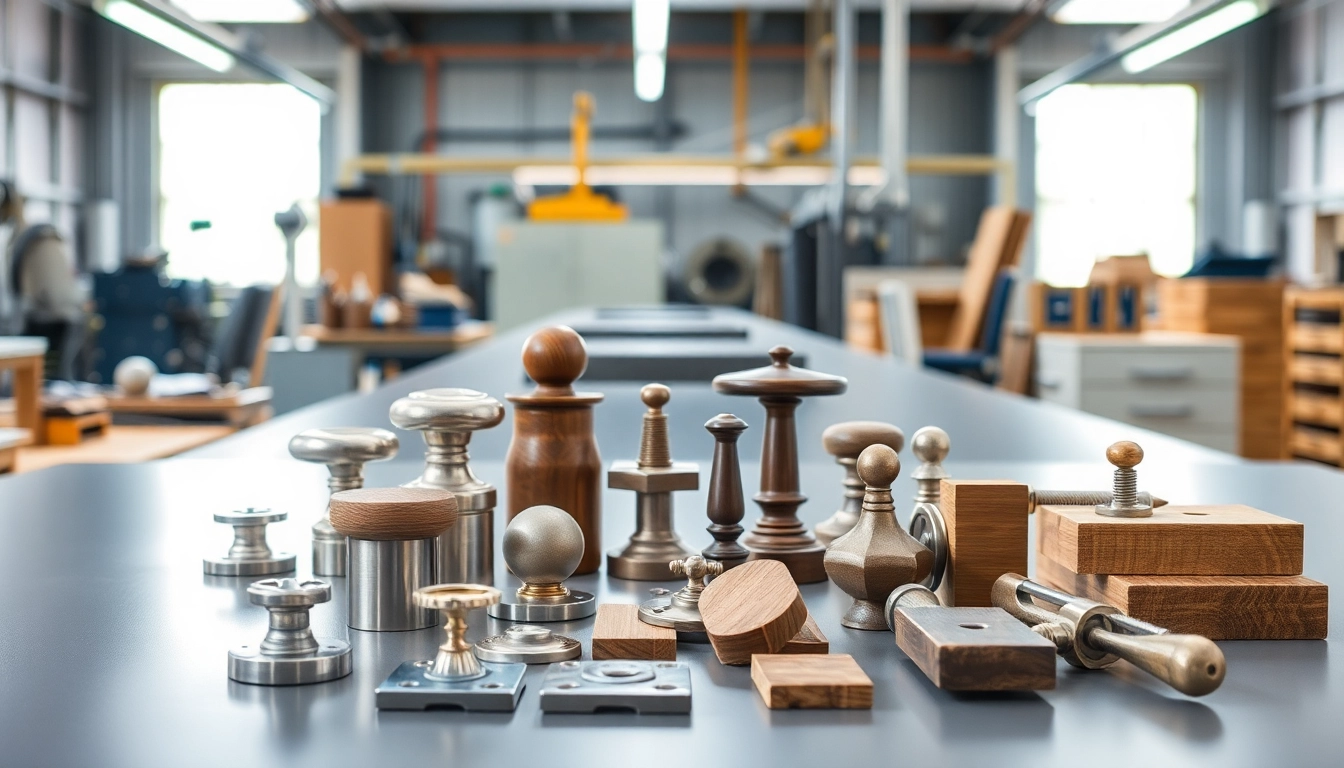Understanding Furniture Hardware Manufacturers
Furniture hardware manufacturers play a crucial role in the furniture industry, supplying essential components that enhance both functionality and aesthetics. These manufacturers produce a diverse range of hardware products, which include drawer slides, hinges, cabinet knobs and pulls, brackets, and furniture legs, catered to both residential and commercial needs. With growing competition and advanced technology shaping the market, furniture hardware manufacturers must stay committed to quality, innovation, and customer service.
What They Do
Primarily, furniture hardware manufacturers design, engineer, and produce various hardware elements that facilitate furniture construction and functionality. They cater to a spectrum of needs, including:
- Production: The main task focuses on manufacturing components like hinges, slides, knobs, and other necessary fittings.
- Distribution: Many manufacturers have robust distribution networks to ensure that their products reach domestic and international markets efficiently.
- Customization: Some companies offer bespoke solutions, allowing clients to design hardware that meets specific aesthetic and functional requirements.
- Technical Support: Many manufacturers provide install guides and support to help customers effectively implement their products.
Types of Hardware Products
The variety of hardware products available in the market can be segmented into several categories:
- Hinges: Essential for cabinet doors, these come in diverse designs such as concealed, pivot, and continuous hinges.
- Drawer Slides: Crucial for smooth operation, these can be full-extension, soft-close, or heavy-duty, each serving different needs.
- Cabinet Knobs and Pulls: Available in various styles and finishes, these hardware pieces play an essential role in the aesthetics of furniture.
- Furniture Legs: Offering both support and design features, adjustable and decorative legs are popular among modern furniture pieces.
- Brackets and Fasteners: Vital for maintaining structural integrity in furniture, these elements are critical in assembly processes.
Industry Standards and Certifications
Meeting industry standards is crucial for furniture hardware manufacturers to ensure the safety and durability of their products. Certifications such as ISO 9001 (Quality Management Systems) and ANSI/BIFMA (American National Standards Institute/Business and Institutional Furniture Manufacturers Association) are essential. These certifications reflect a commitment to quality and proper testing of hardware, which in turn boosts consumer trust.
Key Features of High-Quality Furniture Hardware
When assessing furniture hardware, several key features distinguish high-quality products from lesser options. These factors not only influence performance but also determine the long-term satisfaction of customers.
Material Choices
The materials used in furniture hardware significantly impact durability and functionality. Common materials include:
- Metal: Steel, brass, and aluminum are popular due to their strength and resilience.
- Wood: Often used for aesthetic appeal in decorative knobs and handles.
- Plastic: Frequently used for cost-effective components but may not offer the same durability as metal.
High-quality hardware often employs advanced coatings or finishes to enhance resistance against corrosion and wear, contributing to longevity.
Durability and Design
Durability in furniture hardware is non-negotiable; it determines how well the product performs under repeated use. For instance, soft-close drawer slides should withstand a significant number of openings and closings without failure. Design also plays a critical role, as hardware must not only be functional but also visually appealing to complement the overall aesthetics of furniture.
Customization Options
Customizable hardware allows clients to reflect their personal style or meet specific functional requirements. Manufacturers often offer various finishes, sizes, and styles. For example, a furniture designer may request custom knobs that match a specific wood stain or color scheme to maintain cohesive decor in a room.
Top Trends in Furniture Hardware Manufacturing
The furniture hardware industry is continually evolving, driven by consumer preferences and technological advancements. Some of the most pressing trends currently shaping the market include:
Sustainable Practices
As awareness of environmental issues grows, many manufacturers are adopting sustainable practices. This includes sourcing materials from sustainable suppliers, reducing waste in the manufacturing process, and utilizing eco-friendly packaging. Sustainability not only appeals to environmentally conscious consumers but also often results in cost savings for companies.
Smart Hardware Integrations
With the rise of smart home technology, manufacturers are increasingly integrating technology into their products. Smart hinges can offer features like automatic closing mechanisms, while automated drawer systems might include built-in LED lighting that activates upon opening.
Minimalist Designs
Modern design aesthetics have shifted towards minimalism, focusing on clean lines and simplicity. Hardware that supports minimalism often features sleek shapes and hidden mechanisms, allowing the beauty of the furniture itself to shine through without distractions.
How to Choose the Right Hardware Manufacturer
Choosing the right manufacturer is vital for ensuring quality and fulfillment of project goals. Here are essential factors to consider in the selection process:
Evaluating Product Quality
Quality can be assessed through various methods, including:
- Requesting samples to evaluate workmanship and durability.
- Reading certifications and compliance with industry standards.
- Analyzing customer reviews and testimonials for firsthand experiences.
Supplier Reliability and Reviews
Reliable suppliers usually have a proven track record and positive reviews. It’s essential to gauge their consistency in product delivery, customer support, and responsiveness. Check online ratings, consult references, and search industry forums for insights.
Cost vs. Value Analysis
Not all expensive products are of high quality, nor are cheaper options necessarily inferior. Conduct a thorough cost-benefit analysis, comparing features, warranties, and after-sales support. Sometimes it might be worth spending more on a reliable product that guarantees longevity and performance.
Future of Furniture Hardware Manufacturing
The future of furniture hardware manufacturing appears promising, driven by advances in technology, changing consumer preferences, and a focus on sustainability.
Emerging Technologies
Innovation is at the forefront of manufacturing developments. Technologies like 3D printing for prototypes and production processes, along with Artificial Intelligence for quality control and design optimization, are set to revolutionize the industry.
Market Forecast and Growth Potential
The furniture hardware market is expected to experience significant growth as construction and renovation activities rise globally. According to industry forecasts, sectors investing in residential furniture renovations will drive demand, presenting opportunities for manufacturers who can adapt to emerging trends.
Global Competition Insights
As manufacturers expand into global markets, competition will intensify. Companies must focus on innovation, supply chain efficiency, and responsiveness to market changes to maintain a competitive edge. Localized production can also become a vital strategy to mitigate shipping costs and delays, responding quickly to consumer demands.



